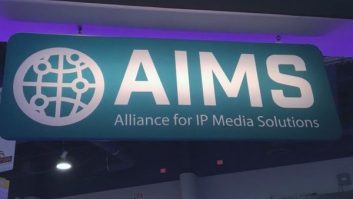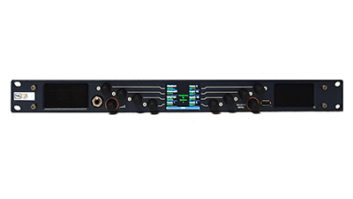Over the 12 years that I‘ve been attending IBC there have been substantial changes and innovations in broadcasting technology, which have impacted how television is produced. Digital transmission and distribution, HD and 5.1 surround sound have all made their mark on the broadcast market and while 3D looks to be in limbo as far as TV is concerned, 4K/Ultra HD, immersive technologies and mobile and second screen technologies are evolving and will look to be major influences for the future.
But the most significant and disruptive technology trend in recent years, and one that is only going to continue to dominate, is the move to IT-based infrastructures and, particularly, the use of low latency IP as a carrier for audio, video, communications and supporting data. This has been quietly establishing itself over the last few years but was highlighted at this year’s NAB convention and has accelerated since then.
As the TV industry prepares for the future, IT and IP will accelerate, with broadcasters and facilities either refurbishing their existing technical centres or building from scratch. We’re already seeing the integration of broadcast audio and video with IT networks to create building-wide data systems, which has brought several benefits to this.
On the technical side there is consistent quality with the ability to log and track material using metadata, which ultimately allows people to share files and work on them simultaneously. Economics is a factor, of course but systems integrators – and their clients – are now able to keep installation and operational costs down by running multiple feeds over single runs of lower cost cables, such as CAT5, while still building and delivering state of the art, fully networked broadcast centres.
This will revolutionise the foundation of the industry across the board, from systems integrators to broadcasters and from post production houses to programme makers. The effect on production is likely to be profound and we can see the beginnings of change today.
There is a huge demand for content, which is being distributed on a wide variety of platforms, from traditional broadcast channels to mobile and streaming devices. Integrated, networked facilities allow material to beedited in existing suites and studios but with huge cost savings and greater flexibility.
IBC2014 offers the opportunity to see the latest developments in AVB (audio/video bridge). This is an open standard for to carrying, routing and switching audio and video signals over standardised Ethernet connections and has already been adopted by a number of leading manufacturers. TSL Products has been working with the technology and the first results of our research and development, the broadcast industry’s first AVB audio monitoring system, will make their European debut at the RAI in Amsterdam.
The PAM AVB range has been designed to address the increasing demand for audio and video over IP workflows. It is based on TSL Products’ flagship Precision Audio Monitoring (PAM) platform and offers AVB compatibility together with support for SDI, AES and analogue audio.
Alongside these units will be the AXIUS series of managed Ethernet switches; another important component in audio and video over IP networks. These are compact switches of eight to ten ports that offer fast, secure connectivity for critical applications requiring PTP (Precision Time Protocol) IEEE 1588 technology for accurate, synchronised network audio-video timing. We see these units as ideal for smaller outside broadcast vehicles, fly away packages or production control rooms where fewer devices need to be connected to the network.
IP has matured into a fast, reliable carrier for both audio and video. Currently private networks with allocated bandwidth are the most secure way for broadcasters and facilities to use the technology but as processing improves and network speed and reliability increase, the public internet could also become a viable carrier. The take-up of audio/video- over-IP continues to grow and although there is something of a format war – or at least a choice – between Dante and RAVENNA, more manufacturers are offering either one or both, something that will be reflected at IBC.
There will be much to see at IBC2014 – including the keynote speech by Professor Brian Cox – but for me IT and IP will still be the talking points round the RAI and in our favourite watering holes.






